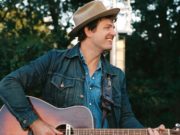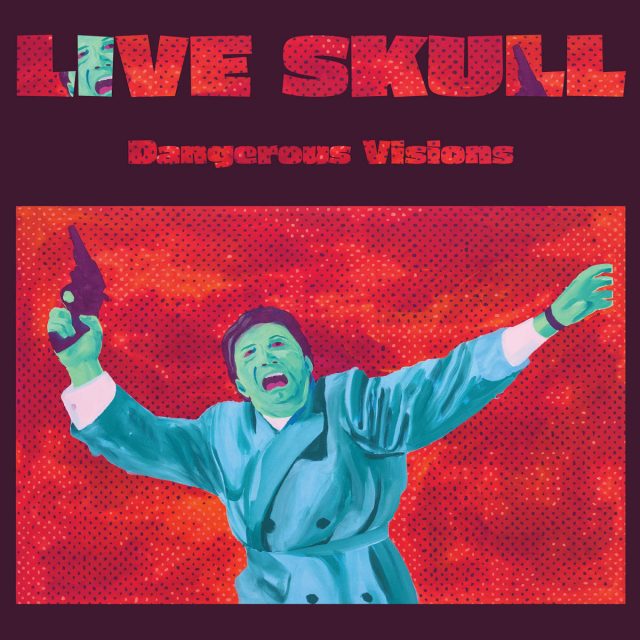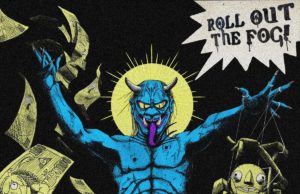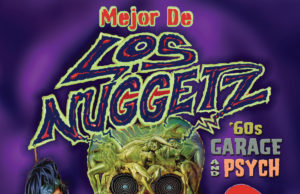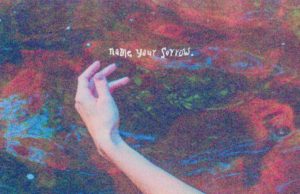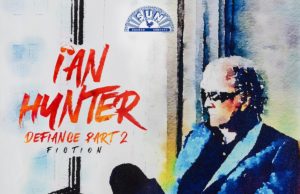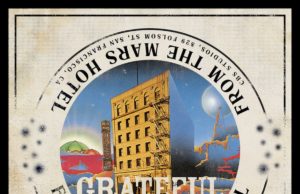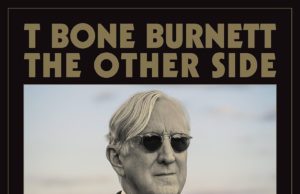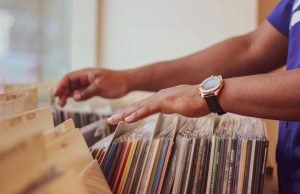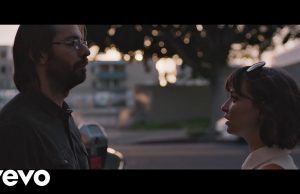THE EDITED PRESS RELEASE: “Emerging in the early ’80s at the end of New York’s legendary No Wave scene alongside Manhattan comrades Sonic Youth and Swans, Live Skull reshaped the aggression of burned-out post-punk into heavy, guitar-driven dystopian rock tunes. Their new release Dangerous Visions showcases their evolution, with Side 1 featuring recently recorded tracks, whilst Side 2 digs into the archives and includes four tracks from their 1989 Peel Session, released here for the first time.
In A Perfect World, the first single to be taken from the album, is fraught with the tension of our times. Sirens wail, then a bass crashes through. Cooped up in his apartment during “the darkest moment of the [COVID-19] shutdown in NYC,“ singer and guitarist Mark C wrote lyrics and recorded vocals while ambulances sped past outside. “I sat in the dark … and dreamed of a more perfect world to replace the damaged one we lived in,” he recalls. “But, as gritty guitar sounds and the incessant beat of the drum and bass line charged forward, I knew we belonged to this world of struggle and chaos.”
Struggle and chaos is nothing new for Live Skull. Mark C and his fellow founder, guitarist Tom Paine, were inspired by the nihilistic sounds of No New York and the dissonant walls of Glenn Branca and Rhys Chatham. Live Skull funneled those influences into hard-edged music that valued melody as much as anarchy. “We loved the noise and the chaos that was happening in the No Wave bands,” says Mark. “But we really tried to fit it into a song.”
Live Skull stopped playing in 1990–but for Mark C, there was still more to be said. So he reformed the group in 2016 with bassist Marnie Jaffe and drummer Richard Hutchins. Last year, an updated line-p with C, Hutchins and bassist Kent Heine recorded the first Live Skull album in nearly three decades, the urgent, forceful Saturday Night Massacre. Now, just a year later and joined by guitarist Dave Hollinghurst, they return with Dangerous Visions, and this time everyone from the entire Live Skull history is involved.
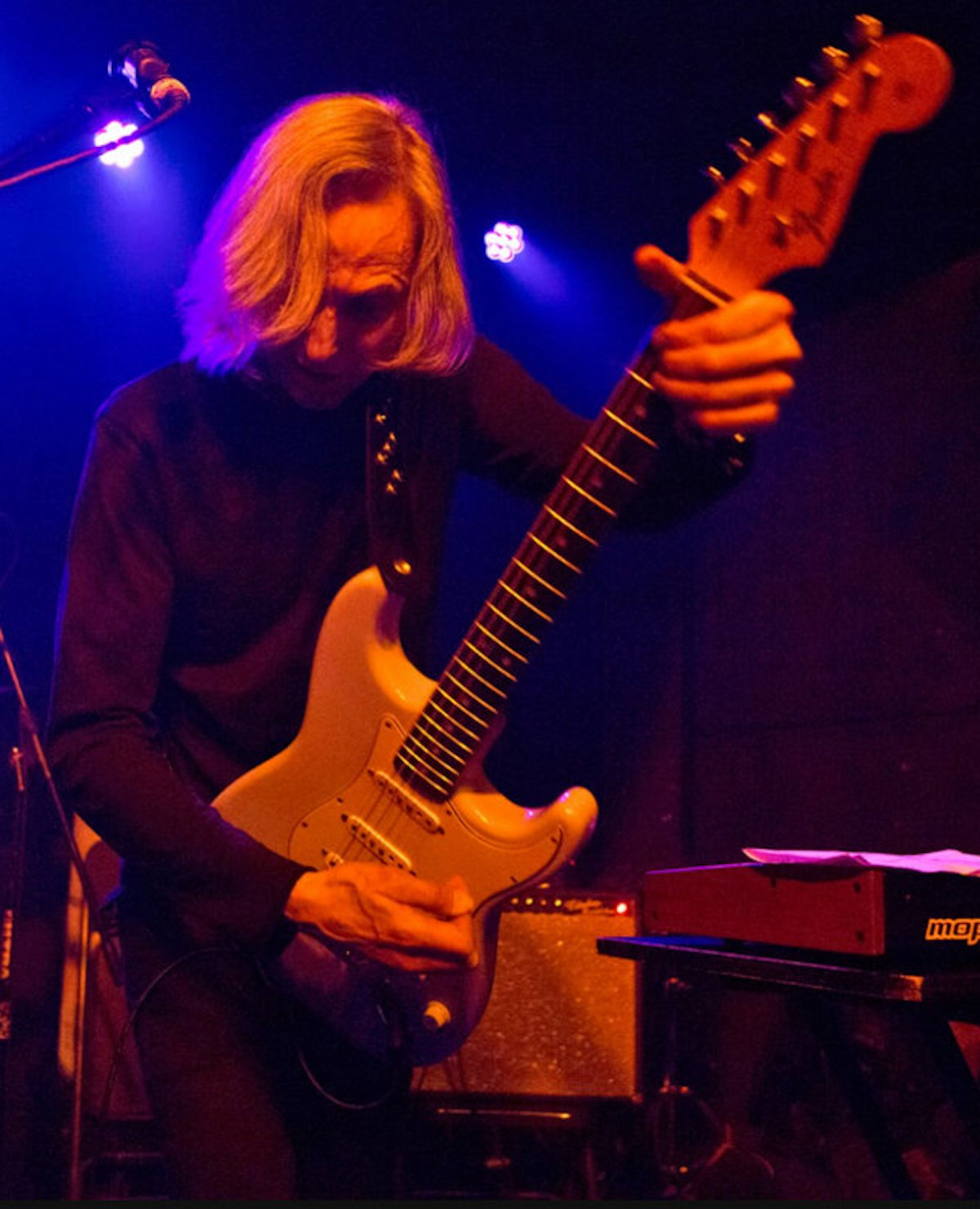
Side 1 nods to that history via a fiery update on Debbie’s Headache (originally found on the 1987 album Dusted). It also includes three new studio tracks along with a live recording of Day One Of The Experiment from a 2019 European tour. Though performed with joyful energy, these songs also confront our current darkness. As Mark C puts it, the marching Dispatches plays out in a dystopian landscape and is a cry for help or at least understanding when things start to go wrong”, while the pounding double bass line on Twin Towers forms “an ode to living through disasters that could have taken you down, be it anarchist bomb making in the West Village or planes crashing into the World Trade Towers.”
Side 2 of Dangerous Visions reaches back to the late ’80s, offering a slew of previously unreleased material. The first four tracks come from a 1989 appearance on John Peel’s BBC radio show. Recorded during a tour for the album Positraction and featuring Thalia Zedek on vocals, the session includes two songs written after that final release. “We hear where Live Skull might have gone next if the band hadn’t been destined to break up within the year,” explains Tom Paine. “The emotionally raw and somewhat unfinished-sounding Someone Else’s Sweat, and Adema, a jacked-up smash-n-grab that still makes a pretty fine impression.” Also included are Alive Again, a free-form outtake from the Dusted sessions, and an alternate mix of Tri Power, with Mark on vocals and, for the first time, Zedek on guitar, from the 1989 compilation Like a Girl, I Want You to Keep Coming.
Such a wide range of sources could make for a scattered album, but Live Skull’s singular approach to music making unites everything on Dangerous Visions. The band’s new tunes tear into the air with the same ferocity of their early material, while the unearthed tracks are still vitally relevant today. Four decades since they began, the world still needs music from this band that never stops evolving and pushing itself–because there’s still no one who sounds like Live Skull.”


